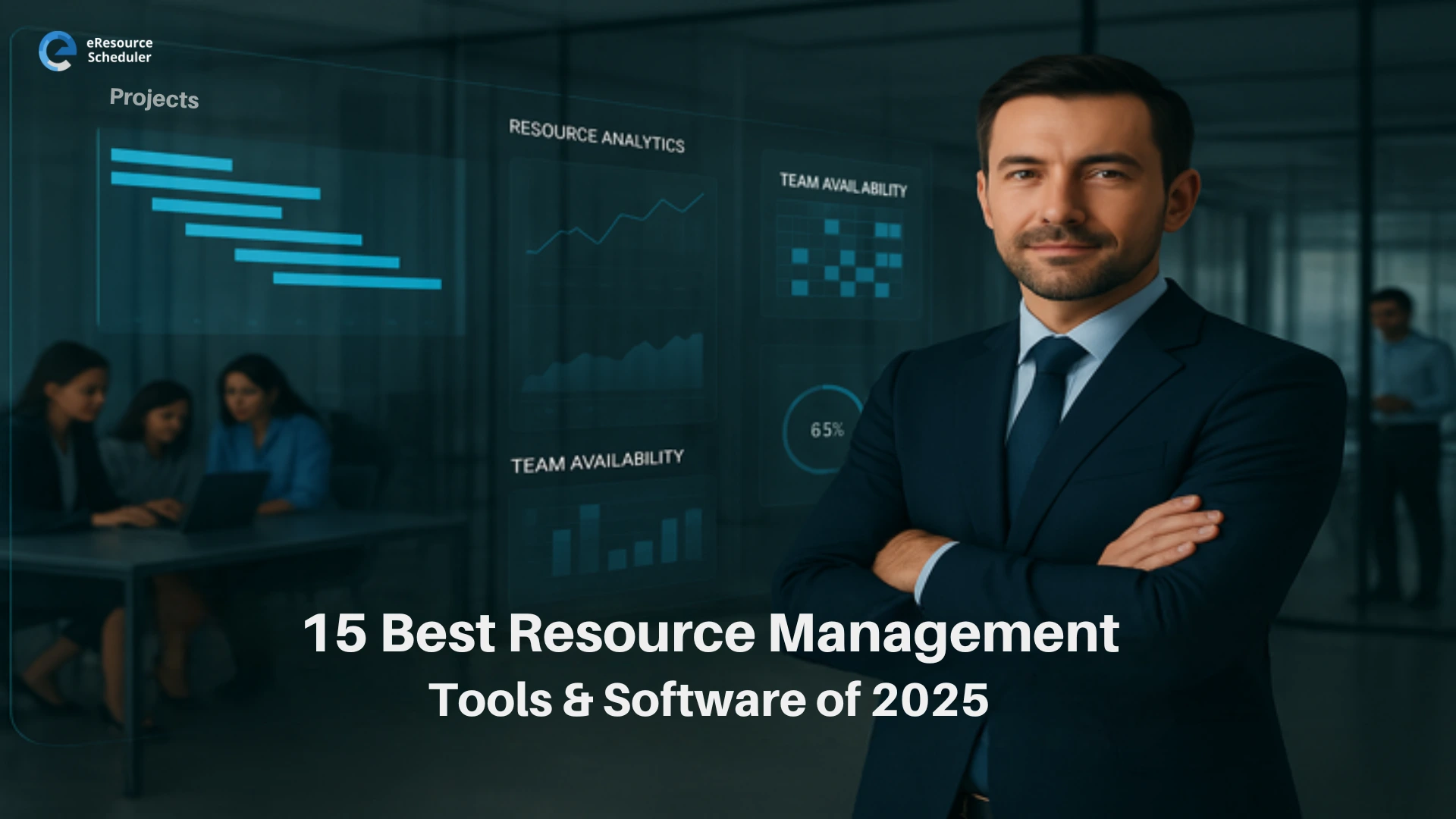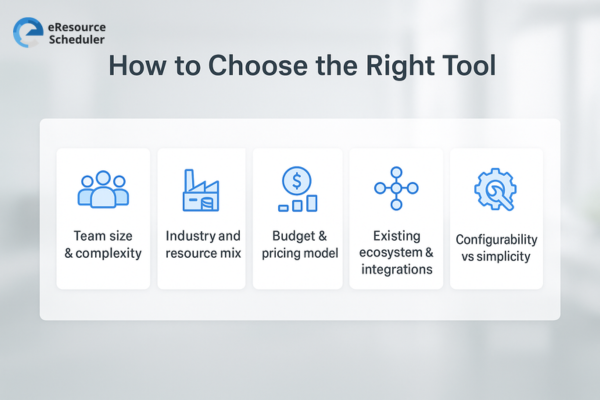
In 2025, resource chaos is the real silent killer of project efficiency. Teams still juggling spreadsheets, double-bookings, or manual reminders will find themselves swallowed by scope creep, burnout, and margin erosion. The flip side? Modern resource management software gives you clarity into who’s overloaded, when a timeline shifts, and where your next bottleneck lies.
If your current setup feels like putting out fires rather than planning a fore-strategy, it’s time to level up. Here are the 15 best resource management tools redefining how teams plan, allocate, and deliver in 2025, each geared to help you finally escape reactive mode.
Resource management is the art (and science) of utilizing available resources like people, equipment, time, and skills, most effectively and efficiently as possible. It’s about making sure every resource is assigned where it delivers the most value, without burnout or idle time.
Resource management software takes this further. It plans, schedules, and optimizes resources across projects and teams. Unlike project management tools that track tasks and deadlines, it offers full visibility into who’s available, who’s stretched, and how future demand stacks up against capacity.
And in 2025, that visibility isn’t optional because:
In short, the difference between merely finishing assignments and doing so profitably lies in resource intelligence.
When shopping for the best resource management software, prioritize these capabilities:
These aren’t optional—they are the foundation that transforms guesswork into strategic decisions.
Below is a curated list of tools that balance innovation, usability, and strategic depth.
eResource Scheduler (eRS) is a powerful enterprise resource management and scheduling software with features like resource scheduling, capacity planning, timesheets, financials, and management reports built to give businesses complete visibility into who’s doing what, when, and for how long. eResource Scheduler turns complex resourcing chaos into clear, data-driven decisions.
Its drag-and-drop scheduling, heatmaps, utilization dashboards, and scenario planning make it a favorite for teams that need flexibility and precision at scale.
Designed to align with every organization's daily resource management requirements, it is available as both a cloud-based and an on-premise solution.
Pros:
Cons (or, what you miss if you don’t use it):
Planview is a comprehensive solution for businesses looking to improve productivity and workflow, focusing on aligning projects with strategic business goals. It combines project and resource management software, capacity planning tools, and resource allocation tools in one platform.
It is ideal for mid-market to enterprise IT, finance, healthcare, and consulting firms, particularly those that need robust resource allocation and capacity planning tools.
Pros:
Cons:
Scoro is a resource management software that is tailored for professional services and IT teams. It combines project planning (Gantt, Kanban), time tracking, resource scheduling, CRM, billing, and robust reporting.
Pros:
Cons:
BigTime is built for professional services teams that need visibility into time, budgets, and resources. It combines time tracking, project management, and utilization analytics, helping firms forecast workloads accurately and optimize team performance for maximum billable efficiency.
Pros:
Cons:
Teamwork is ideal for hybrid teams juggling multiple projects. It integrates task management, resource scheduling, collaboration tools, and time tracking, giving teams one hub to coordinate people, projects, and deadlines efficiently.
Pros:
Cons:
Forecast brings AI-powered resource allocation to project planning. It predicts bottlenecks, suggests optimal team assignments, and provides workload insights—helping teams balance capacity with project demand intelligently.
Pros:
Cons:
Ganttic specializes in scheduling non-human assets. It offers real-time availability, utilization heatmaps, and customizable dashboards, making it simple to plan machinery, rooms, or equipment across projects without clashes or downtime.
Pros:
Cons:
With features like What-If modeling and scenario planning, immediate resource utilization calculations, and easy-to-see resource availability, ProSymmetry helps companies make decisions based on the reality of their people and projects, eliminating the need for guesswork.
Pros:
Cons:
BQE Core unites accounting, time tracking, project management, and resource allocation, allowing firms to scale financial and operational oversight as projects and teams grow.
Pros:
Cons:
If your organization is looking to gain workload visibility and track billable hours in real-time through a combination of project planning, time tracking, invoicing, and resource scheduling software on one platform, then Accelo is the right tool for you.
Pros:
Cons:
Retain labels itself as an enabler in recruiting, retaining, and optimizing talent while also leveraging emerging technologies such as AI and analytics to automate manual processes and provide intelligent decision support.
Retain does not offer a variety of plans. There is just a single plan for which they follow a custom, quotation–based pricing model, which comes with a dedicated and efficient online support service.
Pros:
Cons:
Workfront sits in the enterprise lane with a heavy focus on large scale workflows. It blends project work, approvals, and resource allocation under one roof. The interface feels familiar for teams already living inside Adobe’s ecosystem. It works best when organizations need structured, high-volume operational control.
Pros:
Cons:
Bonsai focuses on freelancers, creators, and small businesses that want a simple work hub. It combines invoicing, contracts, tasks, and basic resourcing in one place. Everything is built for speed and solo operators. It works best when teams need a lightweight setup without long onboarding.
Pros:
Cons:
GoodDay mixes productivity, workflow management, and everyday team operations in one platform. The layout leans toward structure and transparency across tasks, goals, and people. It suits teams that want a broad operating system rather than a focused planning tool.
Pros:
Cons:
Productive is built for agencies that need to manage projects, budgets, and profitability in one place. It links time, resource allocation, and financials tightly. Its strength shows when teams want to monitor revenue and margins while planning people.
Pros:
Cons:

Because ultimately, it’s not just about features, it’s about fit. Here is how to narrow your choice:
Pro Tip: Always test with a trial period. Use real team data. Don’t just click around, try importing your last 3 months of projects and see how resource allocation aligns. That’s your real stress test.
In 2025, resource management isn’t a “nice to have”—it’s mission-critical. Projects scale, timelines compress, and the cost of misallocation is just too steep. The right resource management software doesn’t just schedule work—it powers smarter resourcing decisions, protects your margins, and gives your team predictability.
From eResource Scheduler’s combination of flexibility and control to Kantata’s pipeline-linked forecasts, the tools above each carry strengths worth exploring. Choose a solution that can grow with you, and commit to embedding resource discipline into your operating rhythm.
The right resource management tool doesn’t just schedule employees on projects—it powers data-backed resource decisions. Explore a few, give them real data, and let your team tell you which one unlocks the clarity and flow that you are missing.
1. What makes a resource management tool different from a project management tool?
Project tools track tasks and deadlines while resource management software focuses on availability, skills, capacity, and allocation. It shows who can take on work, who is overloaded, and how demand aligns with capacity.
2. Which industries benefit most from resource management software?
Professional services, IT, consulting, engineering, creative agencies, construction, and any team operating across multiple projects or time zones gain the most because they rely heavily on accurate allocation and forecasting.
3. How do I know which resource management tool is right for my team?
Match the tool to your complexity. Smaller teams need simple scheduling and visibility. Larger or multi-project teams need forecasting, what-if modeling, utilization analytics, and integrations with finance or PM systems.
4. Are resource management tools worth it in 2025?
They are valuable if your work involves shifting timelines or recurring bottlenecks. These tools improve matching, predicts overload earlier, and reduces manual adjustments but depends on clean historical data to perform well.
5. Can resource management software improve profitability?
Yes. When teams prevent overbooking, reduce idle time, and align workloads with billable demand, margins stabilize. Tools that tie scheduling with rates, actuals, and utilization offer the clearest financial upside.
Plan Smarter. Schedule Faster.
Join thousands already using eResource Scheduler to align teams, time, and tasks seamlessly.